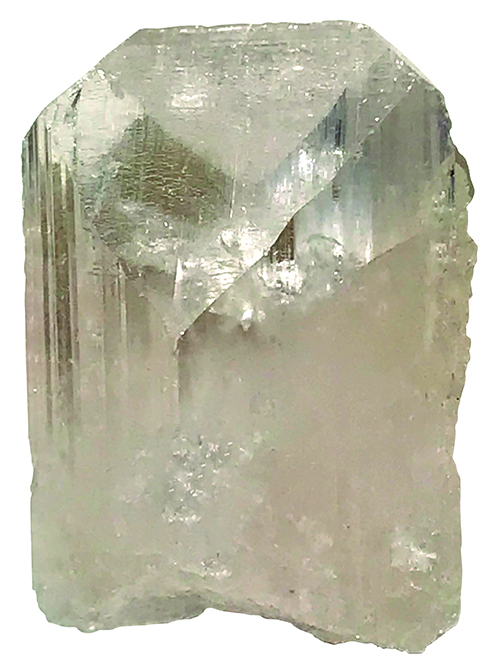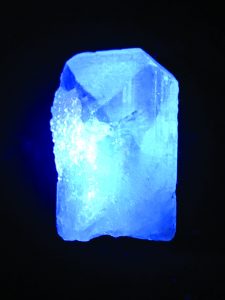
Danburite is a calcium boron silicate mineral classified as a tectosilicate within the orthorhombic crystal system. Now, that’s a mouthful! In short, it is a mineral that often looks like clear quartz or topaz but with a prismatic and distinctive chisel-shaped top or termination.
Many beautifully clear and well-formed crystals are currently on the specimen market from Charcas, Mexico.
Danburite forms in varied geological environments but is most common in contact metamorphic zones, where it forms under high temperatures. It was originally named for the town of Danbury in Fairfield County, Connecticut. There, it was discovered and described in 1839 by American mineralogist Charles Upham Shepard (1804-1886). This original “type” locality is now completely built over and thus no longer accessible to would-be collectors, but danburite also has been found in Mexico, Japan, Madagascar, Myanmar, Russia, Italy, Tanzania, and Bolivia.
At Mohs hardness 7 to 7.5, danburite is fairly hard and can be faceted into gemstones with a vitreous luster, although cut stones may lack the “fire” of, say, a truly fine topaz crystal. Large facet-grade specimens are somewhat rare (most cut specimens range 1 to 5 carats), making this an unusual gemstone in the jewelry market, where it is little known.

Faceted pieces more often are sought by mineral collectors than by connoisseurs of fine jewelry. As a gemstone, danburite has good clarity, strength, and light dispersion.
In addition to colorless or milky-white varieties, it sometimes is yellow, golden-yellow, yellowish-brown, beige or tan, or peachy pink, and such colored specimens make for wonderful faceted gems. However, “cleaner” colorless varieties tend to be more highly sought and valued.
Danburite sometimes exhibits a blue-white to bright sky-blue color under longwave ultraviolet light and also exhibits phosphorescence. That is, it holds and exhibits an “after-glow” for a brief period after a UV lamp has been shown upon it, then flicked off.
For all these reasons, danburite makes a perfect addition to your mineral collection!
If you enjoyed what you’ve read here we invite you to consider signing up for the FREE Rock & Gem weekly newsletter. Learn more>>>
In addition, we invite you to consider subscribing to Rock & Gem magazine. The cost for a one-year U.S. subscription (12 issues) is $29.95. Learn more >>>


 Hide i
Hide i













